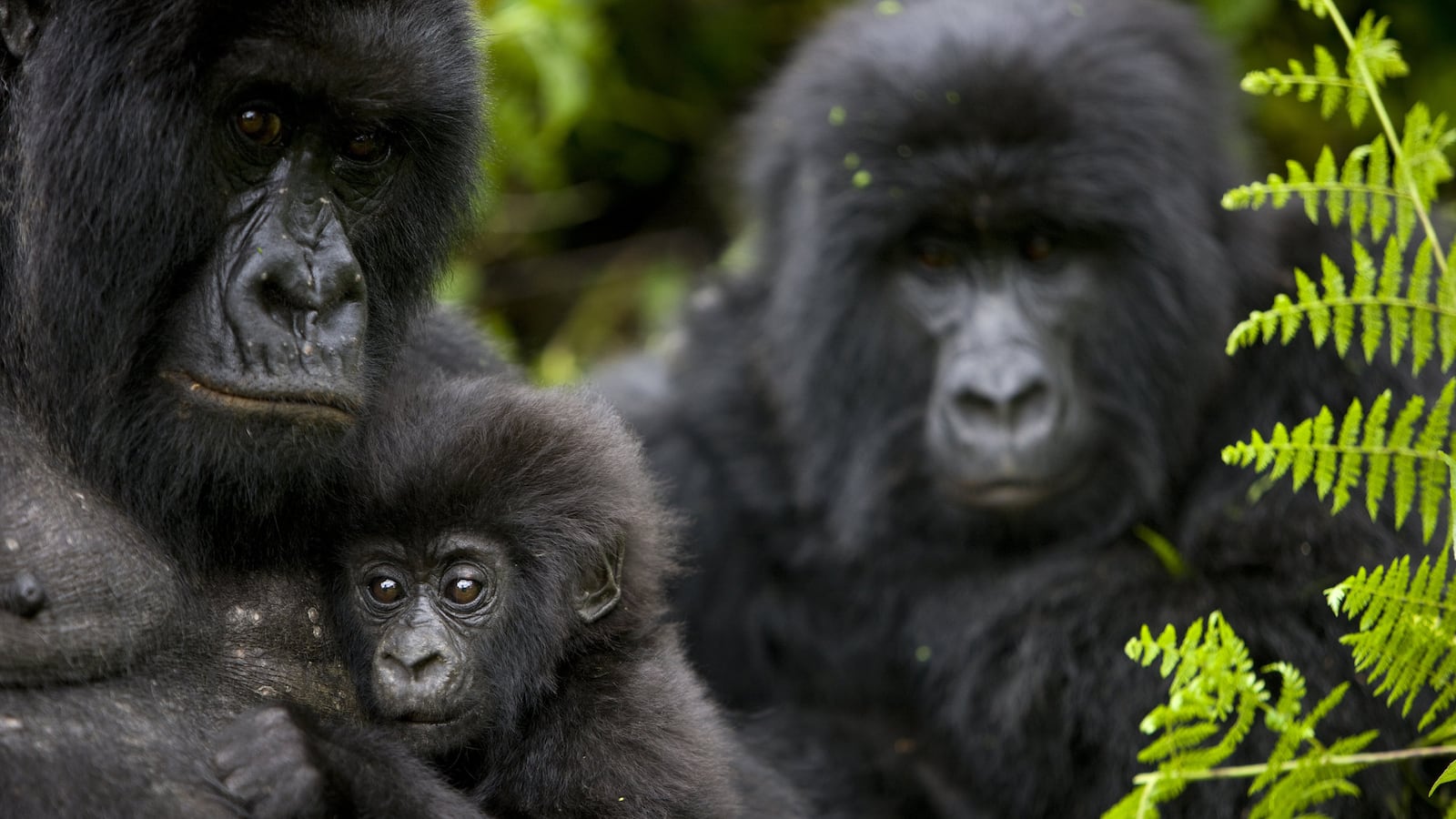If a disease as deadly as Ebola spreads throughout a community, cutting it down to only a fraction of what it was before, will that population ever recover? In the case of great apes at least, a new study in the Journal of Animal Ecology suggests the answer is yes.
In 2003 and 2004, the Ebola virus spread through a population of western lowland gorillas in the Republic of the Congo’s Odzala-Kokoua National Park, cutting the numbers there to 40, down from around 380 great apes. The mortality rate induced a variety of changes in the community structure. Breeding groups of gorillas (which usually consist of one silverback male, three or four females, their offspring, and young blackback males), were more likely to disband, especially if the silverback died, with some immigrating to other troops and many young males shifting to solitary life.
Compounded with the threats that human activities already pose to gorilla populations, Ebola casualties—and there have been many—have dealt devastating blows to the species. One 2006 study, for example, estimated that 5,000 gorillas were killed by Ebola over the course of a decade. The numbers get worse the further back they go: Over the past 30 years, some researchers estimate, Ebola has killed about a third of the world’s gorillas.
But in the case of the gorillas at Odzala-Kokoua National Park, life seems almost normal again only six years after Ebola struck. How is this possible?
Céline Genton, a study author and conservation biologist at France’s University of Rennes, observed with her team the effects of Ebola on the gorillas’ survival rates and social dynamics from afar, from a platform in a jungle clearing using binoculars, a video camera, and powerful spotting scopes. Individual gorillas were identified by face shape, body shape, and pelage coloration. A control group—a population of gorillas unaffected by Ebola, separated by a river and 20 kilometers—was also observed.
During the outbreak, adult survival and reproductive potential were lowered among the gorillas, with the number of breeders immigrating into the population cut down by 50 percent. However, immediately after the outbreak subsided, the probability that the gorillas would form new breeding groups in the short-term rapidly increased again. Six years later, it had almost returned to normal. Likewise, adult gorillas’ survival rates returned to pre-epidemic numbers, highlighting “a certain resilience to rapid changes in the environment,” according to the study.
It’s far from smooth sailing from here, however. Population numbers are still far from what they were before the deadly virus struck. Adult females typically give birth only once every five years, ensuring that, even in the best conditions, “it will take at least 50 years for the population to fully recover,” according to a primatologist at the Dian Fossey Gorilla Fund who spoke with The Dodo. On top of this, “no compensatory immigration occurred after [the] outbreak, indicating that the neighboring populations might have been also affected”—another hindrance to the population’s recovery, according to Dr. Pascaline Le Gouar, senior author of the study.
The current Ebola outbreak in West Africa has not affected gorillas—they live mainly in Central Africa. It has, however, claimed around 1,400 human lives so far. Studies like Genton’s say they highlight the need to take social dynamics into consideration when studying host-population demographics and their responses to disease. The first conservation vaccination trial for chimpanzees was completed this year, though the U.S.—the last developed country that allows biomedical testing on captive primates—is retiring all but 50 of its research chimpanzees to sanctuaries, making future trials less likely since the Chimp Act of 2000 prohibits “invasive research” at such facilities. The situation is dire for both humans and apes in Ebola’s path, but studies like Genton’s do provide one important weapon: hope.






